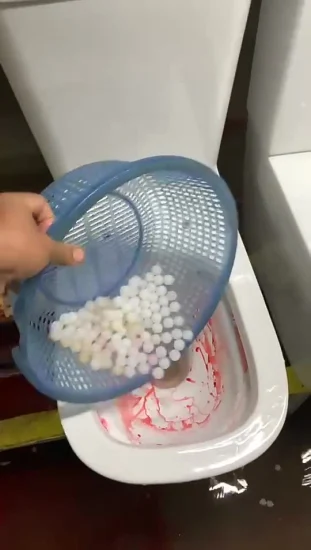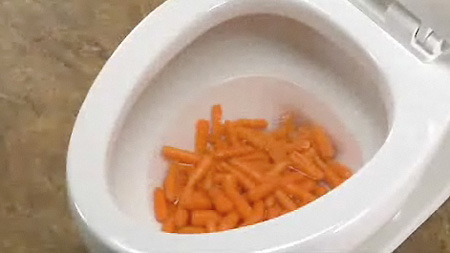Can One to Dispose of Food Waste in the Toilet?
Can One to Dispose of Food Waste in the Toilet?
Blog Article
In this article further down yow will discover some amazing content about Is it safe to flush food (especially rice) down the toilet?.

Introduction
Many people are frequently faced with the problem of what to do with food waste, especially when it concerns leftovers or scraps. One common question that occurs is whether it's alright to purge food down the commode. In this write-up, we'll explore the reasons why people could take into consideration flushing food, the consequences of doing so, and alternate methods for proper disposal.
Reasons why individuals could take into consideration purging food
Absence of understanding
Some people may not know the possible injury triggered by flushing food down the bathroom. They might incorrectly believe that it's a harmless technique.
Convenience
Purging food down the commode might seem like a fast and very easy option to taking care of undesirable scraps, specifically when there's no neighboring garbage can offered.
Laziness
In some cases, people might simply select to flush food out of sheer idleness, without thinking about the repercussions of their actions.
Consequences of flushing food down the toilet
Environmental influence
Food waste that ends up in rivers can contribute to contamination and harm water communities. In addition, the water utilized to flush food can strain water resources.
Plumbing problems
Flushing food can result in clogged pipelines and drains pipes, causing costly pipes repairs and aggravations.
Sorts of food that should not be purged
Fibrous foods
Foods with fibrous structures such as celery or corn husks can get entangled in pipes and create blockages.
Starchy foods
Starchy foods like pasta and rice can take in water and swell, leading to clogs in pipes.
Oils and fats
Greasy foods like bacon or cooking oils ought to never be purged down the bathroom as they can strengthen and create clogs.
Proper disposal techniques for food waste
Using a waste disposal unit
For homes equipped with garbage disposals, food scraps can be ground up and purged via the plumbing system. Nevertheless, not all foods appropriate for disposal in this fashion.
Recycling
Certain food packaging materials can be recycled, lowering waste and decreasing ecological influence.
Composting
Composting is an environment-friendly means to throw away food waste. Organic products can be composted and made use of to enhance soil for horticulture.
The significance of appropriate waste management
Decreasing ecological damage
Proper waste monitoring methods, such as composting and recycling, aid decrease contamination and preserve natural resources for future generations.
Protecting pipes systems
By avoiding the practice of flushing food down the bathroom, house owners can prevent expensive plumbing fixings and maintain the integrity of their plumbing systems.
Final thought
In conclusion, while it might be alluring to purge food down the bathroom for comfort, it is essential to recognize the possible repercussions of this action. By adopting correct waste administration practices and dealing with food waste responsibly, individuals can add to much healthier pipes systems and a cleaner atmosphere for all.
FLUSH FOOD DOWN THE TOILET?
FLUSHING FOOD CAN CAUSE BLOCKED DRAINS IN YOUR HOME
All of the plumbing fixtures in your home are connected to the same sewer pipe outside of your home. This outdoor sewer pipe is responsible for transporting all the wastewater from your home to the Council sewer mains. Even small pieces of food that go down the kitchen sink can cause problems for your sewer. It should therefore be obvious that flushing larger bits of food, such as meat, risks a clog in either the toilet itself or the sewer pipes. Flushing greasy food is even more problematic because oil coagulates when it cools, coating the interior lining of your pipes.
THE TOILET IS NOT A BIN
Food isn’t the only thing that people shouldn’t be flushing down the toilet. People use the toilet to dispose of all kinds of things such as tampons, makeup wipes, dental floss, kitty litter and even underwear. Water goes to great lengths to educate residents about the high costs and stress placed on wastewater treatment systems simply from people flushing the wrong stuff down the toilet. It costs taxpayers millions of dollars each year, and homeowners thousands in blocked drain repairs.
FLUSHING FOOD IS A WASTE OF WATER
Flushing food is a waste of our most precious resource - water. In June this year Level 1 water restrictions were introduced to protect water supply from drought conditions. Much of New South Wales continues to be affected by prolonged drought with recent figures revealing up to 97 per cent of the state remains in drought. Depending on whether you have a single or dual flush toilet, every single flush uses between five and 11 litres of water. In the current climate this is a huge amount of water to be wasting on flushing food that should be placed in the bin (or better yet, the compost).
https://www.jabplumbingsolutions.com.au/blog/can-you-flush-food-down-the-toilet

We are very fascinated by Is it safe to flush food (especially rice) down the toilet? and I am assuming you enjoyed reading the post. If you please pause to distribute this blog entry if you enjoyed reading it. Many thanks for being here. Return soon.
Schedule Today Report this page